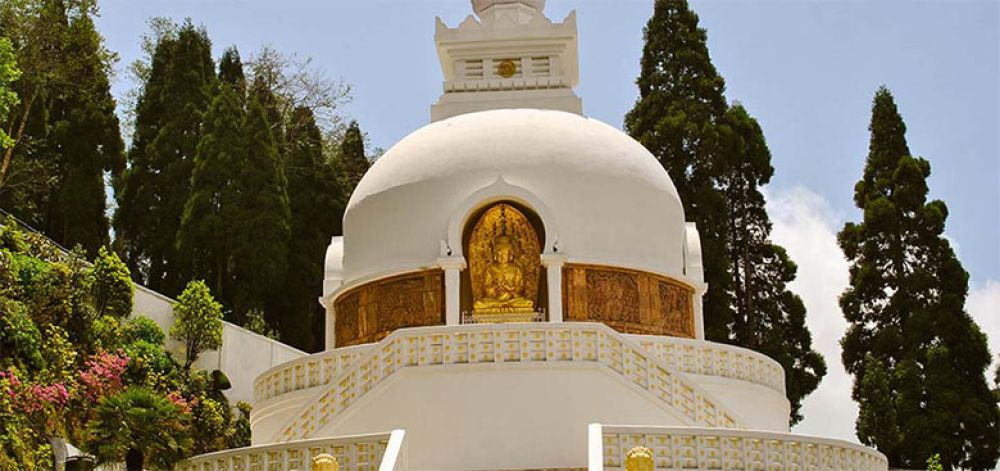

The tranquil Japanese Temple, also known as the Nipponzan Myohoji Buddhist Temple, stands as a symbol of peace and spirituality in the bustling town of Darjeeling. It was built in the traditional Japanese style by Nichidatsu Fujii, a Buddhist monk from Japan who was also the founder of the Nipponzan-Myohoji Buddhist Order. The temple was inaugurated in 1972, aimed at fostering good relations between Japan and India and to honor the memory of two great souls – Jesus Christ and Gautama Buddha.
The Japanese Temple serves as a place for practitioners and visitors to meditate and chant, primarily the prayer "Nam Myoho Renge Kyo," which is believed to bring peace to the individual and society as a whole. The temple is adorned with a pagoda and the main sanctum, where a picture of the Lotus Sutra is placed on the altar, signifying the importance of the teachings of Buddha.
Tourism in Darjeeling is deeply connected to its rich culture and natural beauty, offering visitors a blend of spiritual experiences and scenic landscapes. The Japanese Temple, being an integral part of Darjeeling's spiritual tourism circuit, attracts people from all over the world, looking to immerse themselves in peace and mindfulness amid the Himalayas. The flow of tourists has increased steadily since the temple's inauguration, as it offers a unique cross-cultural experience in the midst of the Indian subcontinent.
Tourism in Darjeeling is continually evolving. Recent trends suggest that tourists are increasingly seeking experiences that are not only recreational but also enriching and educational. There is a greater demand for experiential travel involving interaction with local communities, understanding their customs, and participation in cultural practices. The Japanese Temple capitalizes on these trends by offering guided tours led by monks, cultural events, and meditation retreats. The fusion of Japanese and local cultures at this site represents a unique travel experience that resonates with modern tourists seeking depth in their journeys.
The Japanese Temple is open to visitors throughout the year and is easily accessible from the main town of Darjeeling. Entry is free, and visitors are advised to dress modestly and maintain the sanctity of the place. The serene atmosphere of the temple complex provides a welcome respite from the hustle and bustle of everyday life, making it a must-visit destination for those traveling to Darjeeling.
With the growing significance of sustainable and responsible tourism, Darjeeling, along with its tourism stakeholders, is moving towards practices that are eco-friendly and culturally sensitive. These efforts aim to ensure that the region's natural beauty and cultural heritage, including landmarks like the Japanese Temple, are preserved for future generations to cherish.